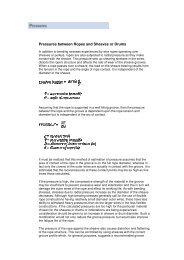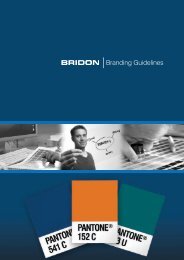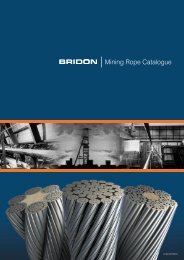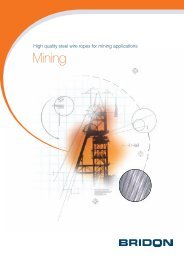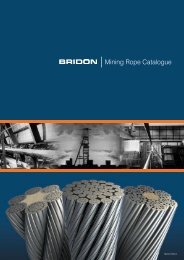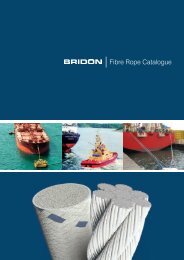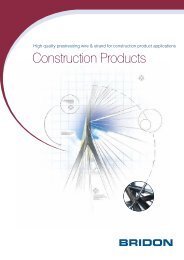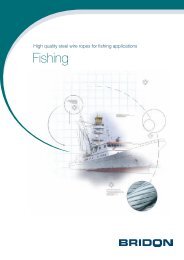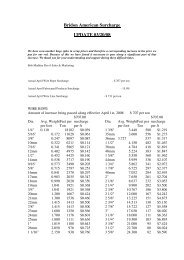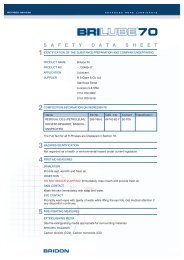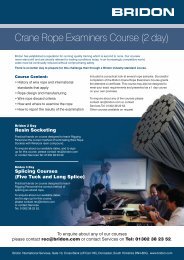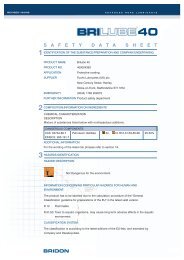Bridon - Teyseer Group
Bridon - Teyseer Group
Bridon - Teyseer Group
Create successful ePaper yourself
Turn your PDF publications into a flip-book with our unique Google optimized e-Paper software.
General Guidance on Rope SelectionWhen selecting a steel wire rope to suit a particular applicationthe following characteristics should be taken into consideration.• Strength• Rotation Resistance• Fatigue Resistance• Resistance to wear and abrasion• Resistance to Crushing• Resistance to Corrosion• Rope ExtensionStrengthThe responsibility for determining the minimum strength of arope for use in a given system rests with the manufacturer of themachine, appliance, or lifting equipment. As part of this processthe manufacturer of the machine, appliance, or lifting equipmentwill need to be aware of any local regulations, standards, orcodes of practice which might govern the design factor ofthe rope and other factors which might influence the designof sheaves and drums, the shape of the groove profiles andcorresponding radius, the drum pitch and the fleet angle, all ofwhich have an effect on rope performance.Once the strength (referred to as minimum breaking force orminimum breaking load) of the rope has been determined it isthen necessary to consider which type of rope will be suitablefor the intended duty. It is important therefore for the designerto be fully aware of the properties, characteristics and limitationson use of the many different kinds of steel wire ropes whichare available.Important note for operators<strong>Bridon</strong> recommends that once the machine, appliance or liftingequipment has been taken into service, any replacement rope shouldpossess the required characteristics for the duty in question and should,as a minimum, at least comply with the minimum guaranteed breakingforce stated by the original equipment manufacturer.Resistance to RotationIt is important to determine whether there is a requirement touse a rotation-resistant rope.Six- or eight-strand rope constructions are usually selectedunless load rotation on a single part system or “cabling”on a multi-part reeving system are likely to causeoperational problems.When loaded, steel wire ropes will generate:• “Torque” if both ends are fixed.• “Turn” if one end is unrestrained.TorqueWhen both ends of a rope are fixed, the applied force generates“torque” at the fixing points.TurnWhen one end of a rope is free to rotate, the applied loadcauses the rope to turn.The torque or turn generated will increase as the load appliedincreases. The degree to which a wire rope generates torqueor turn will be influenced by the construction of the rope.Having recognized what can happen when a rope is loaded it isnecessary to select the correct type of rope. It should be notedthat all ropes will rotate to some degree when loaded .The diagram below serves to illustrate the differences in rotationalproperties between the three basic types of stranded rope.Torque or TurnAnchor atStructureAnchorat DrumAnchoredFree toRotateFORCEGENERATESTORQUEFORCECREATESTURNEndurance 6x19Endurance 6x36Dyform 6Dyform 8LoadEndurance 8RREndurance 19Dyform 18/18PIDyform 34LR/34PI/34MAXEndurance 35LSSpecific information including the torque factor and the turnvalue expressed in degrees per lay length for individual ropeconstructions can be found on page 47.6 BRIDON North American Catalog



